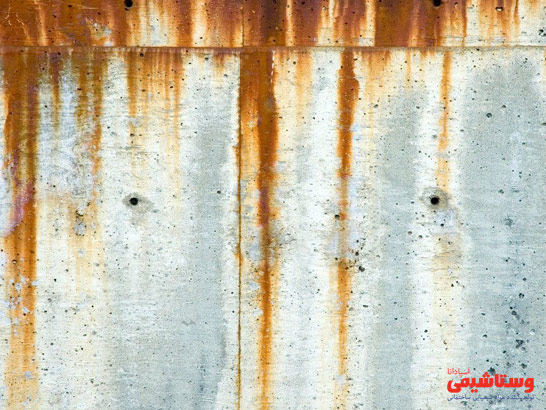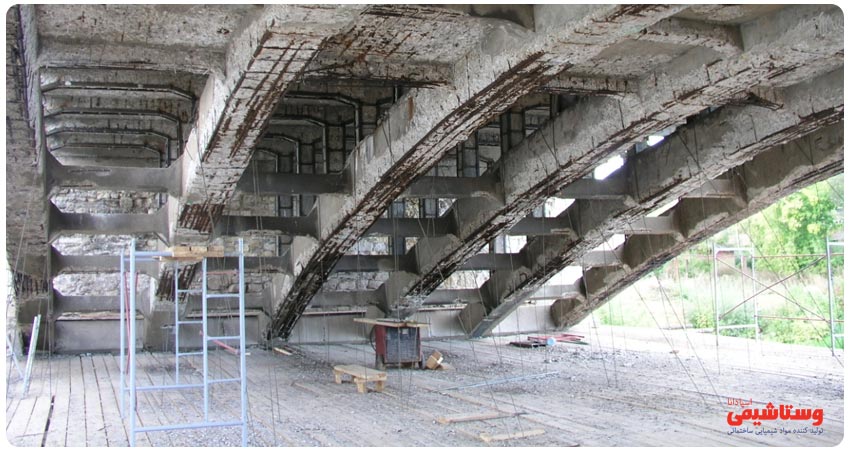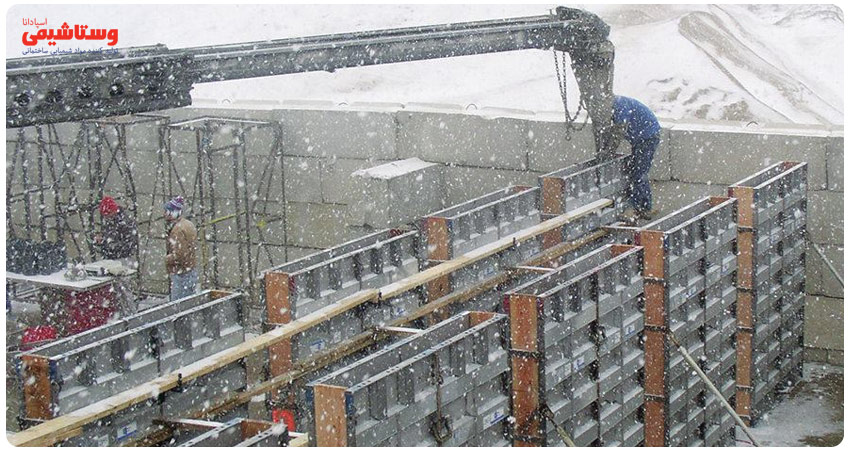Concrete rust, a silent killer in the heart of structures
Concrete, a material that once revolutionized the construction industry, today faces a serious challenge: rust. This destructive phenomenon, which over time destroys the strength and stability of concrete structures, not only greatly reduces their useful life, but also entails significant life and financial risks.
In this article, we are going to do an in-depth study of concrete rust, its causes, its different types, and methods of preventing and dealing with this problem. By understanding this issue, engineers, builders, and building owners can take effective steps to preserve the health and increase the lifespan of concrete structures.
What is concrete rust?
Concrete rusting is a complex and multi-stage process that occurs as a result of chemical and electrochemical reactions between steel in concrete and corrosive environmental factors. By rusting and oxidizing the steel, this process increases its volume and puts a lot of pressure on the surrounding concrete. Finally, this pressure leads to cracking, flaking and gradual destruction of concrete.
Types of concrete rust
There are two main types of concrete rust:
Rust caused by carbonation: This type of rust is the most common type and occurs due to the penetration of carbon dioxide in the air into the concrete. Carbon dioxide reacts with calcium hydroxide in concrete and reduces its alkaline pH. This destroys the protective oxide layer on the steel and provides the basis for its rusting.
Chloride Corrosion: This type of corrosion mainly occurs on coastal structures or areas where deicing salts are used. Chloride ions penetrate into concrete and react with steel, leading to rapid and severe rusting.
Effective factors in concrete rust
Several factors can contribute to concrete rusting, including:
Material quality: The use of poor quality raw materials, such as low-quality cement or contaminated aggregates, can increase the permeability of concrete and make it more vulnerable to rust.
Water-cement ratio: Using an inappropriate water-cement ratio when making concrete can lead to the creation of holes and pores in it and provide a way for corrosive agents to penetrate into the concrete.
The thickness of the concrete cover: the smaller the thickness of the concrete cover on the rebars, the more likely they are to rust.
Environmental conditions: exposure to water, high humidity, corrosive chemicals, freezing and melting of ice, as well as the presence of chloride ions in the air, are among the most important environmental factors affecting concrete rust.
Consequences of concrete rust
Concrete rust can have irreversible consequences, such as:
Reducing the strength and stability of the structure: rusting of steel greatly reduces its tensile strength, and as a result, the concrete structure becomes weaker against incoming loads and is at risk of collapse.
Cracking and flaking of concrete: The increase in the volume of rusted steel puts a lot of pressure on the surrounding concrete and leads to cracking, flaking and its appearance.
Reducing the useful life of the structure: concrete rusting significantly reduces the useful life of the structure and increases its maintenance costs.
Life and financial risks: The sudden destruction of rusty concrete structures can lead to significant life and financial losses.
Concrete rust prevention methods
By taking appropriate preventive measures, it is possible to prevent the occurrence of rust in concrete structures and increase their useful life significantly.
The most important methods of preventing concrete rust are:
Use of high-quality raw materials: high-quality cement, aggregates and water should be used in making concrete.
Appropriate design of concrete mix: water-cement ratio, type and amount of concrete aggregates and additives must be carefully selected and adjusted according to the environmental conditions and the type of structure.
Increasing the thickness of the concrete coating: the thicker the concrete coating on the rebars, the longer they are exposed to corrosive factors.
Use of stainless steel rebar: Galvanized, epoxy coated, or stainless steel rebar can be used to increase corrosion resistance.
Moisture insulation: proper insulation of concrete surfaces using impermeable materials, such as paints, coatings and sealants, can prevent water and moisture from penetrating into the concrete and reaching the rebars.
Proper drainage: The accumulation of water and moisture around concrete structures should be prevented by creating a proper drainage system.
Use of anti-rust additives: You can use special chemical additives in the concrete mixture, which prevent them from rusting by creating a protective layer on the rebars.
Periodic inspection and maintenance: Regular inspection of concrete structures and prompt repair of any cracks or damage can prevent rust from developing and spreading.
Considering the following points can also help prevent concrete rust:
1.Avoid concreting in cold and rainy weather.
Avoid placing corrosive chemicals near concrete structures.2.
Regularly clean the surface of concrete structures and prevent the accumulation of dust and pollution on them.3.
By observing these points and implementing appropriate preventive methods, it is possible to prevent the rusting of concrete, this silent enemy of our structures, and to ensure their health, stability and useful life.
Remember: concrete rust is a serious problem that should not be ignored. By taking timely action and taking appropriate preventive measures, this problem and its dangerous consequences
can be prevented.
Concrete corrosion removal methods
There are different methods to fix concrete corrosion, and choosing the right method depends on the type and severity of corrosion, structural conditions and project budget.
Some of the common methods of removing concrete corrosion are:
Removal and replacement of damaged concrete: In this method, the rusted and damaged parts of the concrete are completely removed and replaced with new concrete.
Protective coatings: Epoxy, cement or polymer coatings can be used to cover the concrete surface and protect it from corrosive agents.
Sacrificial Anodes: In this method, metal electrodes (usually aluminum or magnesium) are used as sacrificial anodes, which are attached to rusted rebars and provide electrical current to protect them.
Corrosion Inhibitors: Chemicals can be used as corrosion inhibitors inside or on the surface of concrete, which prevent steel from rusting by slowing down the rate of chemical reactions.
Epiresin: Epoxy resin is a type of repair material that is used to fill cracks and voids in concrete, as well as to connect damaged concrete parts to each other.
Choosing the right method to remove concrete corrosion should be done by experienced professionals according to the specific conditions of each project.






